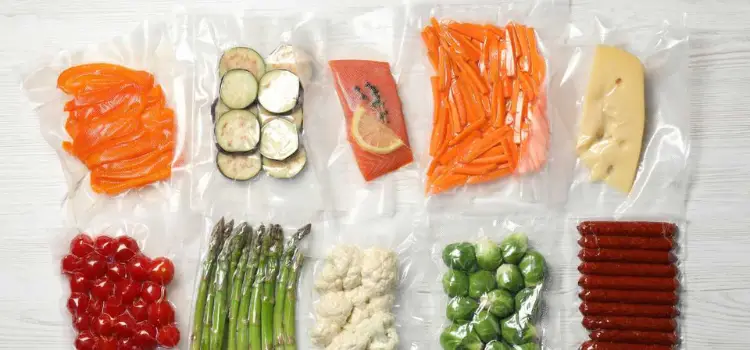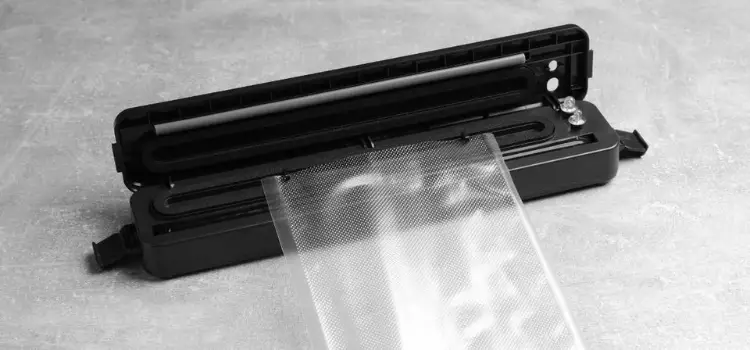As an Amazon Associate, I earn from qualifying purchases

In the realm of food preservation, vacuum sealing has emerged as an indispensable technique, offering a multitude of benefits, particularly when it comes to liquids. Whether you’re an avid home cook or simply someone who values efficient storage solutions, learning how to vacuum seal liquids can revolutionize the way you manage your kitchen and pantry.
This process not only extends the shelf life of liquids, such as soups, sauces, and marinades, but also maximizes space, allowing for more organized storage. In this comprehensive guide, we’ll explore the equipment you need, provide step-by-step instructions, share practical tips for achieving the best results, and highlight common pitfalls to avoid. By the end, you’ll be equipped with the knowledge to confidently vacuum seal liquids, enhancing both preservation and storage efficiency in your home.
Necessary Equipment to Vacuum Seal Liquids
Before diving into the process of vacuum sealing liquids, it’s important to gather the right equipment. Here’s a rundown of what you’ll need:
- Vacuum Sealer: There are various types of vacuum sealers available on the market, but not all are suitable for liquids. For sealing liquids, it’s best to use a chamber vacuum sealer, which is designed to handle wet foods. However, if you only have an external vacuum sealer, you can still seal liquids by freezing them first.
- Seal Bags or Containers: Choose high-quality vacuum seal bags or containers that are designed for use with your vacuum sealer model. These should be durable and able to withstand the vacuum pressure without tearing. Consider investing in bags with a liquid barrier if you plan on sealing a lot of soups or broths.
- Freezer (Optional): If you’re using an external vacuum sealer, you’ll need to pre-freeze your liquids to prevent them from being sucked into the machine during the sealing process.
Understanding the equipment and its specific use for liquids is crucial to ensuring a successful vacuum sealing process.
Step-by-Step Instructions to Vacuum Seal Liquids
Vacuum sealing liquids requires a slightly different approach than sealing solid foods. Follow these steps to ensure an airtight seal without any mess:
- Pre-Freeze Liquids: If you’re using an external vacuum sealer, pour your liquid into a container and freeze it until solid. This prevents the liquid from being drawn into the vacuum sealer during the sealing process.
- Prepare the Vacuum Sealer: Set up your vacuum sealer according to the manufacturer’s instructions. If you’re using a chamber vacuum sealer, you can skip pre-freezing and proceed with sealing directly.
- Fill the Bags: Pour the liquid into the vacuum seal bags, leaving about two inches of space at the top to ensure a proper seal. Avoid overfilling, as this can cause leaks during sealing.
- Vacuum and Seal: Place the open end of the bag in the sealer. For chamber sealers, position the entire bag inside the chamber and close the lid. Start the sealing process, ensuring that the vacuum removes all air before sealing the bag.
- Inspect the Seal: Once sealed, check the bag for leaks or incomplete seals. A properly sealed bag should be airtight and devoid of air bubbles.
By following these steps, you’ll create a secure seal that preserves the freshness and flavor of your liquid foods.
Tips for Best Results

To maximize the effectiveness of vacuum sealing liquids, consider these helpful tips:
- Selecting the Right Bags: Opt for vacuum seal bags with reinforced seams and a liquid barrier to prevent punctures and leaks.
- Sealing Different Types of Liquids: When sealing thicker liquids like stews or chunky soups, ensure even distribution within the bag to facilitate a uniform seal.
- Labeling and Storing: Clearly label each bag with the contents and the date. Store them flat in the freezer or pantry to save space and make retrieval easier.
- Enhancing Flavor Preservation: Adding herbs or spices before sealing can enhance the flavor profile of your liquids. Vacuum sealing helps intensify these flavors over time.
These tips will help you get the most out of your vacuum sealing efforts, ensuring that your liquids remain fresh and flavorful.
Common Mistakes to Avoid
Avoiding common mistakes can greatly improve your vacuum sealing success rate. Here are some pitfalls to watch out for:
- Overfilling Bags: Filling bags too full can prevent a complete seal and lead to leaks. Always leave enough space for the seal to form properly.
- Improper Sealing Techniques: Ensure the bag is positioned correctly in the sealer to avoid incomplete seals. Double-check the seal if using an external vacuum sealer.
- Skipping the Pre-Freezing Step: If using an external vacuum sealer, failing to pre-freeze liquids can result in the liquid being drawn into the sealer and causing damage.
By recognizing and avoiding these common errors, you can improve your vacuum sealing technique, reducing waste and increasing efficiency.
Conclusion
Vacuum sealing liquids is a practical and effective method for preserving freshness and optimizing storage space in your kitchen. By investing in the right equipment and following the outlined steps and tips, you can extend the shelf life of your liquid foods while maintaining their quality and flavor. Whether you’re preparing meals in advance or simply looking to better organize your pantry and freezer, vacuum sealing offers numerous benefits.
We encourage you to experiment with vacuum sealing liquids and explore its various applications for meal preparation and storage. Join the growing community of vacuum sealing enthusiasts and enjoy the convenience and efficiency this method brings to your culinary endeavors.
FAQ
Can you seal liquids in a vacuum sealer?
Yes, you can seal liquids in a vacuum sealer. For best results, use a chamber vacuum sealer which handles liquids efficiently. If using an external vacuum sealer, pre-freeze the liquid to prevent it from being sucked into the machine, ensuring a proper, airtight seal.
How do you vacuum a liquid?
To vacuum a liquid, pre-freeze it if using an external vacuum sealer. Pour the liquid into a vacuum seal bag, leaving space at the top. Place the bag in the vacuum sealer and start the process, ensuring air is fully removed before sealing to prevent leaks.
How to freeze soup in a vacuum sealer?
To freeze soup in a vacuum sealer, first let it cool, then pour it into a vacuum seal bag, leaving room at the top. Pre-freeze the bag until the soup is solid, then vacuum seal it. This method prevents the liquid from being drawn into the sealer.
As an Amazon Associate, I earn from qualifying purchases